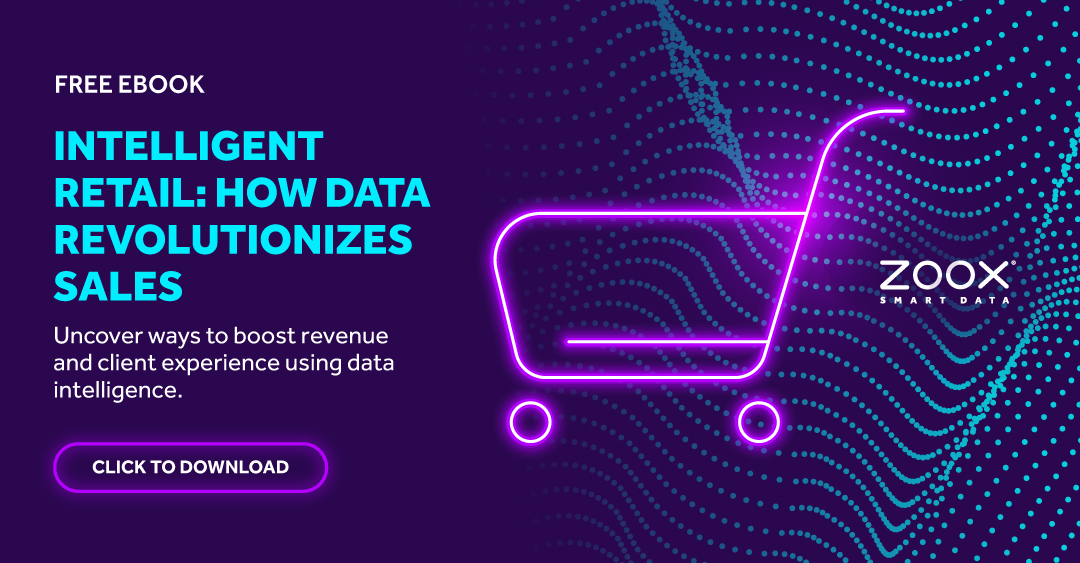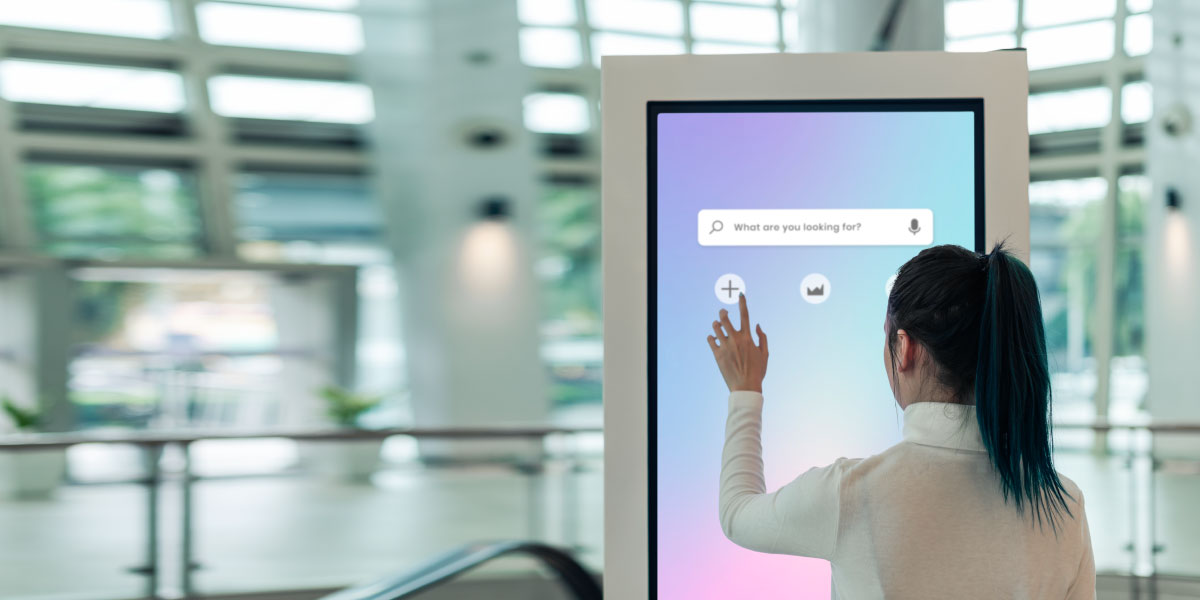How Data Will Deliver Better Customer Experiences and Transform the Future of Retail
 Zoox Smart Data - 21 de January de 2022.
Zoox Smart Data - 21 de January de 2022.
There has never been a more exciting time to be in the retail industry. 'Shopping' is no longer an isolated activity or a place to go. It is now something that customers can do from anywhere and at any time via mobile, tablet or computer.
With this evolution comes an increase in expectations and the need for a better experience. 91% of customers are more likely to buy with brands that recognize, remember and provide relevant and personalized offers and recommendations, according to a Microsoft survey.
The help of data-driven intelligence tools, predictive models, smart wifi's and so many other technologies has made it easier to create a personalized and differentiated shopping experience for customers.
However, while this is the future of retail - and it is already happening - this turnaround does not happen in the blink of an eye. While some companies are accelerating their digital transformations, others are living in denial.
This lack of attitude leaves decision-makers facing a harsh reality: updating their companies in order to survive - and do it fast!
In the State of Businesses report - Progress' research with Loudhouse, which interviewed more than 700 decision makers at global companies - the majority of respondents reported running into problems such as lack of internal alignment, poorly skilled professionals, and cultural resistance.
And while they struggle to make an entire structure understand the importance of going digital, who gains ground is a constant anxiety and fear of "already being too late." So how do we prove to CEOs, managers, analysts and trainees that data-driven transformation is the only possible way forward for retail?
And there is good reason to worry:
The same study revealed that 55% of companies believe they have less than 1 year before they start to suffer financially and lose business because they haven't transformed digitally. That's not much time, is it?
That's not much time, is it?
But the good news is that in this article we have separated 6 ways to use technology to stand out from the competition and start transforming your customers' experience. Moreover, the points raised here serve as an argument for you to accelerate this movement in your company.
6 ways to use technology to improve customer experience in retail
Before deciding what technology you might need, it's important to understand how they can benefit your business. And of course, keep in mind the most important thing: the customer - since he/she is the one who will make your accounts grow.
Data powers the agile, automated, personalized, omnichannel experience that customers want. It helps you understand who your customers are, how they buy, what they buy, how they prefer to communicate; and to build better, smarter tools to offer the most accurate services and products and thus retain them.
1) Personalization in first place
As the contact channels between company and customer grow, real-time personalized engagement becomes the Customer Success standard. Every company may have to manage hundreds or thousands of different experiences thinking that there are very distinct segments and personalities.
This requires thinking about the best way to manage data. Besides choosing between DMP, CRM or CDP, it is also important to understand how your company is investing in data sensors.
Is there collection via smart wifi in the physical store? At the time of a customer service, data from several sources are cross-referenced to generate a unique ID and know if John who is in the physical store now is the user j_smith who bought online last week and was criticizing a promotion on social networks yesterday?
Moreover, with large volumes of data, it is necessary to cluster customers to know which groups are the best buyers of a particular product, or which niche is most stimulated by flash promotions.
Personalization is what will make your company sell more and not waste effort on campaigns.
2) Developing new talent
With all these changes happening in the retail market, automation also needs to make life easier for marketing and sales teams. There must be a focus on tasks that can be automated and on professionals who are highly adaptable to changes in 'direction'.
When we talk about automation, it's not just about capturing and identifying customer data, but also about producing content and cross-referencing Customer Success, Sales and Marketing data to generate valuable insights.
These teams need to adopt new behaviors and ways of working:
- giving customers greater control over their data and informing them of the benefits of sharing the information;
- ensuring the security and responsible handling of customer data;
- creating successful hypersegmented campaigns and increasing brand loyalty;
- working on automations to optimize time for creation and data analysis;
3) Deliver value in exchange for data
The primary resource that retailers need for Customer Success activities is customer data. However, there is often a misconnection between the data companies ask for and the value customers see from sharing that information.
For example, Adobe research found that 78% of companies ask customers to share their phone numbers, but only 24% of customers say they are willing to do so. When asked for data such as email and full name, 59% and 50% of consumers, respectively, are willing to give this information.
This makes sense because people want to receive updates about their purchases and special promotions. Offer giveaways, personalized service, amenities that justify the request for additional data, and watch your information base grow like never before.
4) Integration beyond the frontline
Of course, it is very important that your marketing and sales teams are aligned so that there are no surprises. However, all the work of the frontline can be ruined if the customer experience suffers in-store or online because of a lack of logistics integration.
Especially in large stores - which deal with a great variety of products in stock, and complex operational logistics of deliveries, window display, etc - it is critical to leverage integration between stores and logistics staff, store peak times, and higher traffic in the region.
There are already machine learning technologies and pre-built models that update this information in real time and can prevent a stock replenishment during a store's peak time, or already alert employees of a sector about a maintenance in advance, so that the operation lasts as little time as possible, and even speed up the delivery of a product to a customer's house that was off the original route.
5) POS Technologies
Also during the pandemic, scan-and-go technologies, which allow consumers to avoid checking out, gained traction at physical Points of Sale (POS). This evolution solves one of the most frequent consumer complaints about the in-store experience: waiting in lines. It also offers retailers the opportunity to increase operational efficiency.
However, with it comes the need to invest in security technologies beyond cameras - facial recognition systems, artificial intelligence for self-checking, and companies that can do remote surveillance - all to reduce the risk of fraud and theft.
Also in physical stores, you can use augmented and virtual reality to provide more immersive and personalized experiences; robotics for restocking to floor cleaning; video monitoring as a tool to understand customer behavior and improve inventory management; digital signage and smart shelves for quick price changes and marketing messages.
6) Security and transparency always
We are increasingly seeing that consumers don't trust organizations to use their data responsibly. Brands that provide transparency about how they use data can earn customers' trust and engage with them in a more relevant and effective way.
Better data security can also elevate the experience for new and old customers. Secure customers are happy customers, who in turn are loyal customers. And loyal customers are usually the most profitable.
Customers need to understand that your company invests in security and also gives options so that the customer, instead of deleting her/his data, realizes how they can customize their profile within your brand's database to receive only the communications that matter most to them.
In other words, the client needs to understand that data allows personalization and differentiated service, while the absence of it does not help them get the best promotions in the region, in the segments they are most interested in, for example.
If you haven't thought about the best ways to keep your customers' accounts and data protected, as well as partnering with companies and technology tools that take care of customer data privacy and protection, this is a homework assignment for yesterday!
Delays can be dangerous...
Atrasos no processamento de dados, por exemplo, de pedidos dos dispositivos dos clientes, para servidores ruins ou lentos, podem afetar negativamente suas operações de logística e serviria apenas para frustrar funcionários, clientes e acabar diminuindo a escalabilidade do seu negócio e os resultados a partir de análises inteligentes de dados.
Internet of Things (IoT), machine learning, and modern data capture applications, as we've seen, all have retail uses. However, investing in a slow tool, a cheap and archaic database, or a partner company that is not compliant with the GDPR or your country's current data legislation can be a big risk.
Delays in processing data, for example, orders from customer devices, to bad or slow servers, can negatively affect your logistics operations and would only serve to frustrate employees, customers, and end up diminishing your business scalability and results from intelligent data analysis.
Therefore, invest in reliable solutions/partners to digitally transform your business and get rid of obstacles such as lack of confidence in the team and IT, cultural resistance to data-driven, lack of digital technical skills from different areas, poor integration between teams, shallow knowledge about the customer, campaigns not assertive and targeted, among others!
To become even more aware of the technological trends for retail and understand the development points in your company, download our new free eBook with identified challenges, the main solutions for the sector. Click the button in the image to access. 






Comments